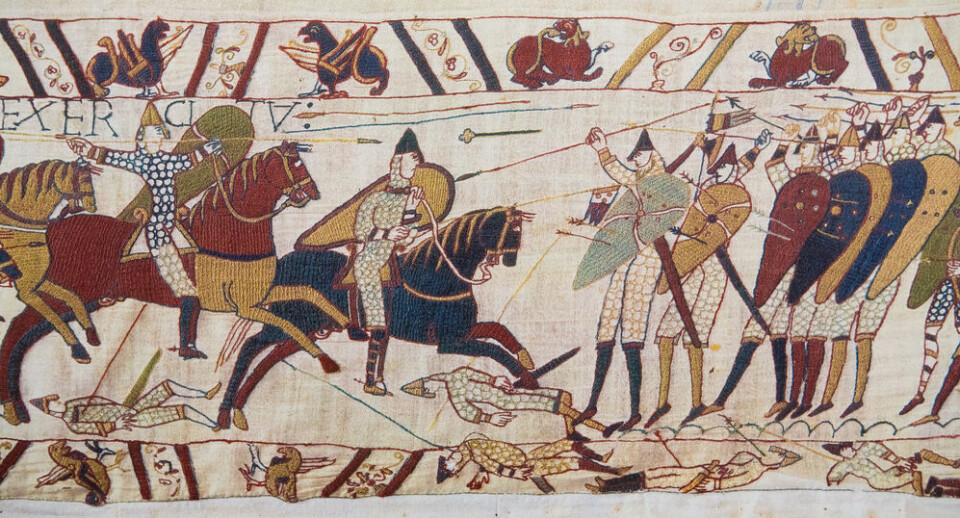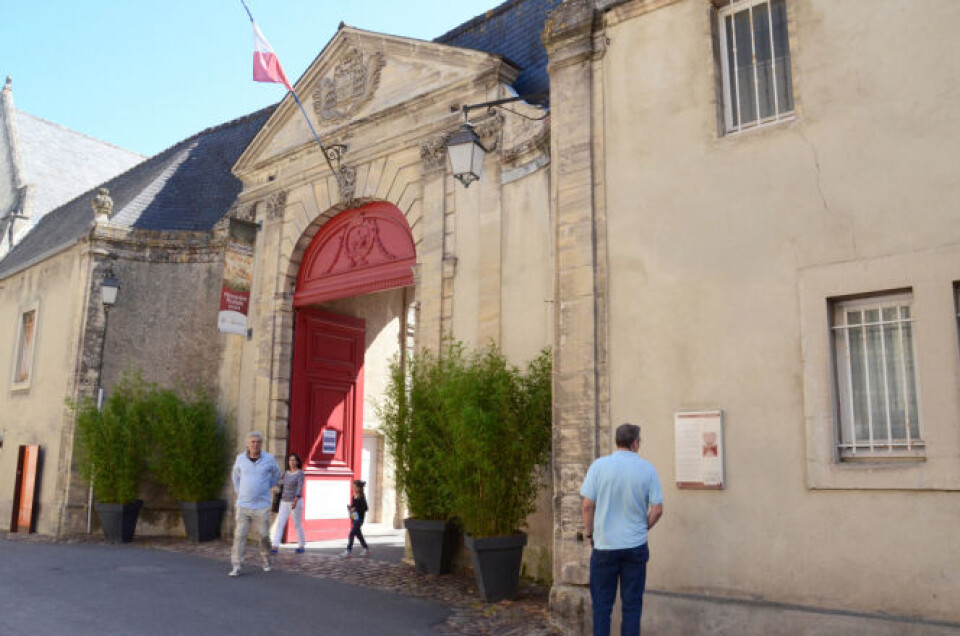-
Visitors to Normandy American Cemetery must soon book in advance
With more than one million visitors last year, the cemetery is one of the region’s most-visited D-Day sites
-
Photos: 94 chateaux open their doors to visitors in Dordogne
The fifth Chateaux en Fête festival offers a chance to look around many impressive properties that are usually private
-
Martel: the medieval French town home to a 'truffle' train and lavender festival
The small town in the Lot offered refuge to an English throne heir until his death
1,000 years of travel: Meandering history of France’s Bayeux Tapestry
The historic artwork’s holiday to the UK may be on hold but art historian Dr Julia Faiers explains that it has rarely been stationary for long

In its current display at the Bayeux Tapestry Museum in Bayeux, the world-famous Unesco-listed embroidery has captivated around 400,000 visitors every year.
There has been much excitement since President Macron announced in 2018 that France may lend the cultural treasure to Britain for the first time in its 950-year history. Curators decided, however, that plans for the embroidery’s cross-channel trip have to be put on hold while essential restoration is carried out.
Although disappointing, nowadays we respect experts’ assessments to preserve fragile medieval artefacts. The Bayeux Tapestry is currently displayed in a temperature- and humidity-controlled glass cabinet under dim lighting, but this hasn’t always been the case.
Over the centuries the 70-metre long embroidery (not strictly a tapestry) has been moved from one town to another, hung up in a cathedral, kept in a box, and even mounted onto a bizarre contraption which allowed it to be unfurled and then rolled up again – the kind of manhandling that now brings conservators out in hives.
Read more:Legacy of La Poste: Tracing France’s postal service through the ages
Historians agree that William the Conqueror’s half-brother Odo, the bishop of Bayeux, commissioned the embroidery to decorate his cathedral for its consecration in 1077, eleven years after William defeated the English at the Battle of Hastings.
Thereafter it was hung up around the cathedral nave for one week per year to celebrate the Feast of the Holy Relics. An eighteenth-century source tells us that for the other 51 weeks the tapestry was stored in a chest in a chapel dedicated to Saint Thomas Becket, a practice that undoubtedly saved the relic when protestants ransacked Bayeux cathedral in 1562.
During the French Revolution the tapestry escaped destruction when the captain of the National Guard intervened to prevent it from being cut into pieces to cover army wagons.
In 1803, the embroidery was moved to the Fine Arts Museum in Caen, a larger town in Normandy. At this time, Napoleon had amassed troops in Boulogne-sur-Mer, and a propaganda campaign was launched to compare him with “the last man to successfully invade Britain.” You can see where this is going… In 1804, the Bayeux Tapestry was displayed in the Louvre as part of a temporary exhibition pitching Napoleon as the next William the Conqueror. Putting the tapestry on display for Parisians was a very visual way to make this link.

Although Napoleon failed to become the next conqueror, as acknowledgment for the townspeople’s efforts to preserve the tapestry over the centuries, he returned the work to Bayeux rather than Caen. The people of Bayeux were again able to view the tapestry in the cathedral for a week in July, and for the rest of the year on a contraption onto which the tapestry had been rolled.
An English traveller reported that it was kept ‘coiled round a machine, like that which lets down the buckets to a well.’ Remarkably, the tapestry survived this rolling and unrolling for nearly 40 years, until it was moved in 1842 to a more suitable environment. It was placed in an eye-level glass cabinet in a room much, much smaller than its intended setting in the cathedral, in Bayeux’s Hôtel de Ville.
Read more:A brief history of French time and ‘timekeepers’
Apart from a brief interlude when it was moved for safe-keeping during the 1870 Franco-Prussian war, the tapestry remained in its glass case for 70 years. In the late 1930s a concrete shelter was built beneath the Hôtel du Doyen in Bayeux to house the tapestry in the event of war.
During France’s occupation, the work became a focus of interest for the Ahnenerbe, a pseudo-scientific branch of the SS made up of scholars charged with promoting Hitler’s invented racial doctrines. These Nazi academics found ‘evidence’ of early Germanic culture in the tapestry, and ordered it be moved for further study, first to an abbey 11km from Bayeux, and then to a chateau 175km away.
After the allied invasion in June 1944 the tapestry was moved to the basement of the Louvre. New research from Iñigo Salto Santamaría at the Technische Universität Berlin shows that the General Inspector of Monuments Historiques and a colleague saw a unique opportunity to present the Bayeux Tapestry in the Louvre to liberated Paris.
Santamaría says they had their pick of the museum’s galleries because most of the permanent collections had been moved to safe repositories during the war. The organisers placed the tapestry in a wall-mounted case which ran all the way round the U-shaped Salle des Sept Metres, a gallery perfectly suited to displaying the 70-metre long medieval artefact.

Although the tapestry then returned to its 19th-century display case in Bayeux, the wartime exhibition showed how the work could be displayed effectively in a modern museum setting. This resulted in the town securing funding to update its own exhibition space to optimise the viewing experience for visitors.
The new museum space in the Hôtel du Doyen presented the tapestry in a display case just like the one in the Louvre, and there it stayed until 1983 when it was put into its current meticulously controlled environment at a 17th-century former seminary.
The Bayeux Tapestry’s story doesn’t end there. Visitors will soon benefit from the museum’s spectacular 20 million euro upgrade, which is set to finish in 2026. Perhaps one day it will even cross the English Channel…
Want to know more?
If you can’t make it to Bayeux, the museum has recently launched a wonderful online resource – a full digitisation of the tapestry.
The original tapestry may not be heading to the UK for some time, but visitors to Reading Museum can inspect a beautiful Victorian replica, stitched in 1885 by members of the Leek Embroidery Society in Staffordshire.
Related articles
Beaulieu-sur-Dordogne: Why pilgrims flock to this French beauty spot
Assassination plots, Coco Chanel: Tales of two French ‘grands cafes’
Marseille: The cultural melting pot of France’s south
























